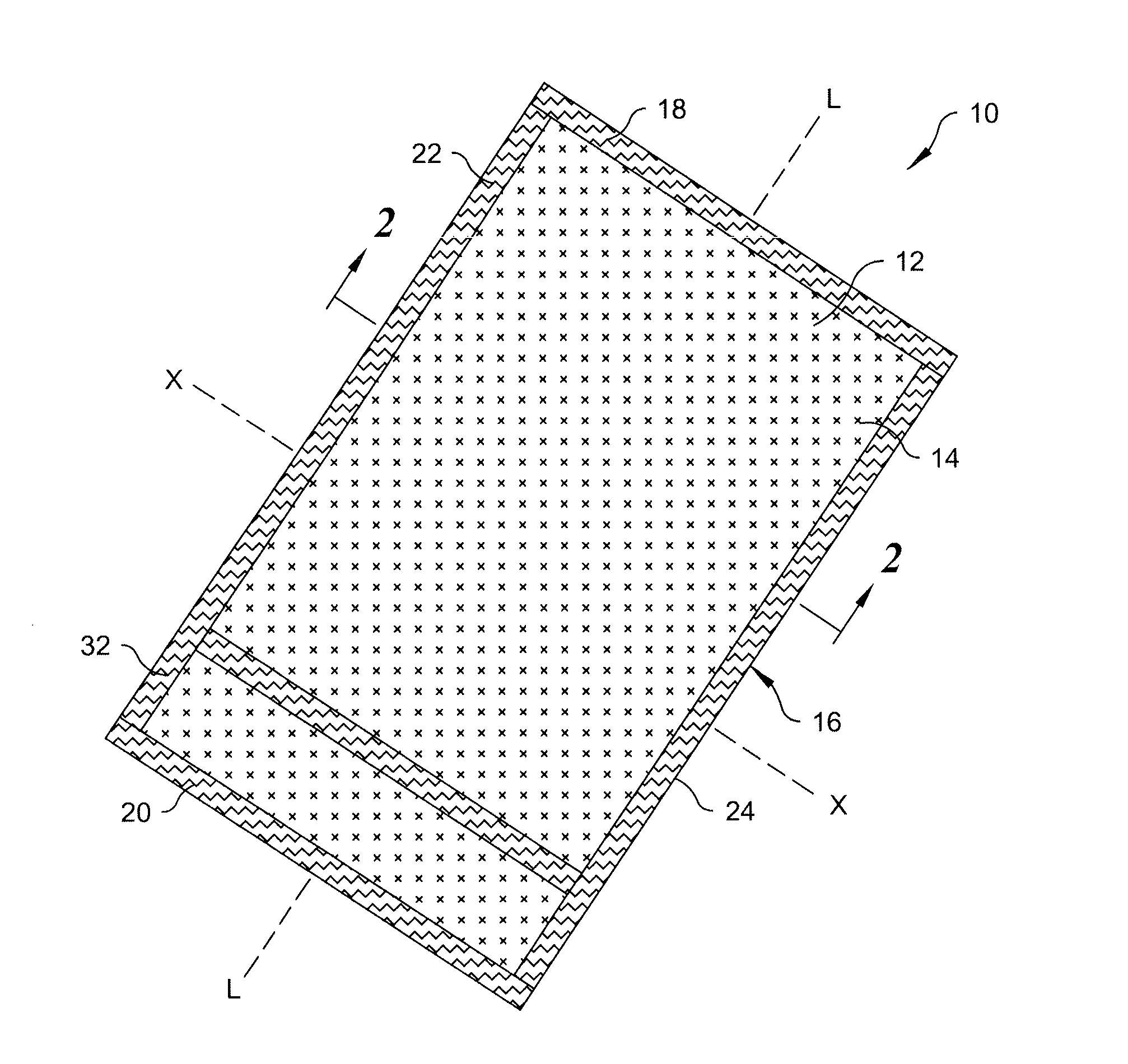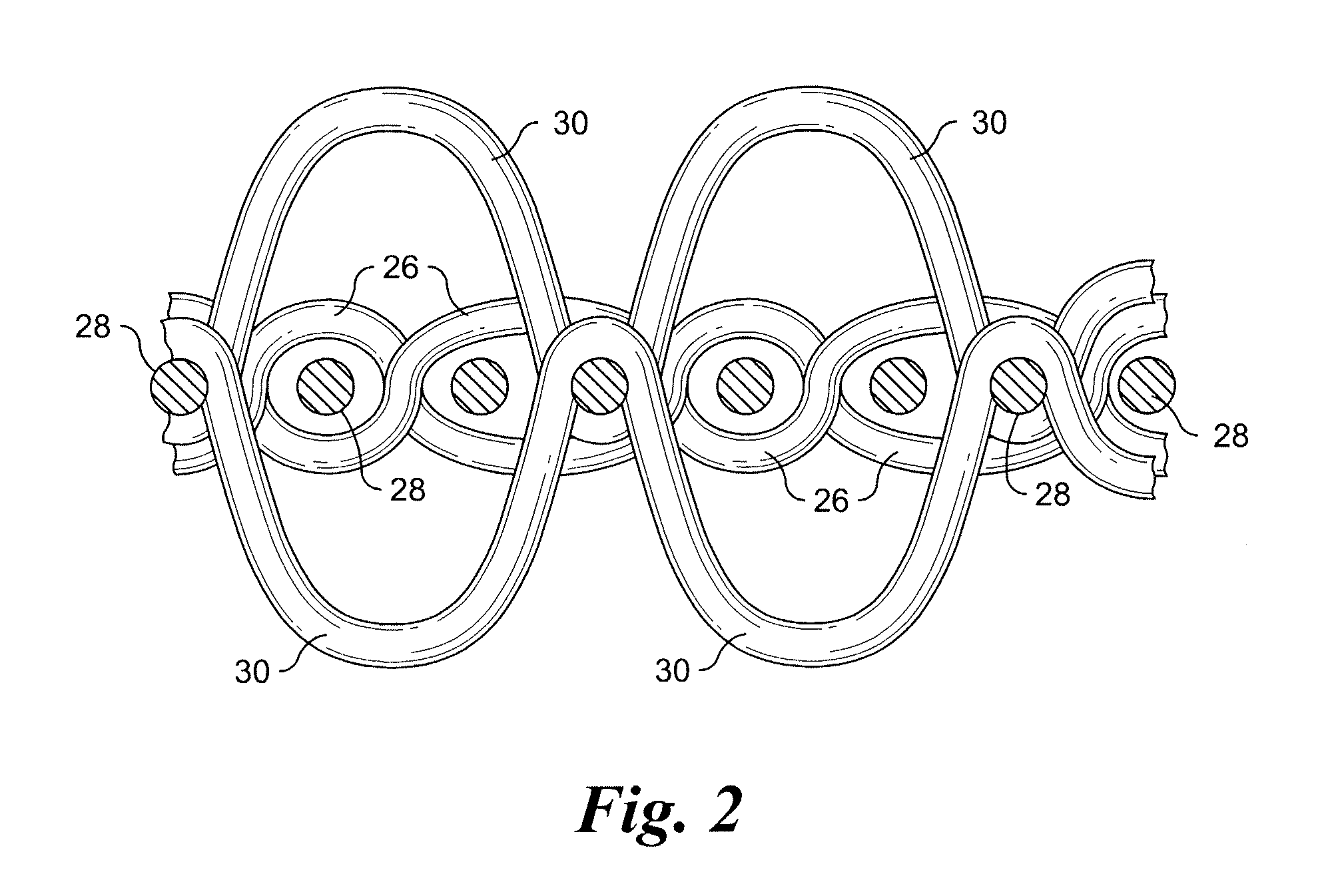Woven towel
a technology of woven fabrics and woven fabrics, applied in the field of woven terry fabrics, can solve the problems of shrinkage of conventional woven cotton fabrics, inability to withstand multiple launderings, and relatively short useful life of fabric materials, and achieve the effect of significantly inferior absorption properties of woven fabrics compared to cotton woven fabrics
- Summary
- Abstract
- Description
- Claims
- Application Information
AI Technical Summary
Benefits of technology
Problems solved by technology
Method used
Image
Examples
Embodiment Construction
[0014]Certain terminology is used in the following description for convenience only and is not limiting. The words “right”, “left”, “lower”, and “upper” designate directions in the drawings to which reference is made. The words “inwardly” and “outwardly” refer to directions toward and away from, respectively, the geometric center of the fabric and designated parts thereof The terminology includes the above-listed words, derivatives thereof, and words of similar import. Additionally, the words “a” and “an”, as used in the claims and in the corresponding portions of the specification, mean “at least one.”
[0015]Referring to the drawings in detail, wherein like numerals and characters indicate like elements throughout, there is shown in FIGS. 1-2 a presently preferred embodiment of a woven fabric in accordance with the present invention.
[0016]With particular reference to FIGS. 1-2, the woven fabric, generally designated 10, is preferably a woven terry fabric, and more preferably a woven...
PUM
| Property | Measurement | Unit |
|---|---|---|
| dimensional shrinkage rate | aaaaa | aaaaa |
| shrinkage rate | aaaaa | aaaaa |
| shrinkage | aaaaa | aaaaa |
Abstract
Description
Claims
Application Information
 Login to View More
Login to View More - R&D
- Intellectual Property
- Life Sciences
- Materials
- Tech Scout
- Unparalleled Data Quality
- Higher Quality Content
- 60% Fewer Hallucinations
Browse by: Latest US Patents, China's latest patents, Technical Efficacy Thesaurus, Application Domain, Technology Topic, Popular Technical Reports.
© 2025 PatSnap. All rights reserved.Legal|Privacy policy|Modern Slavery Act Transparency Statement|Sitemap|About US| Contact US: help@patsnap.com



